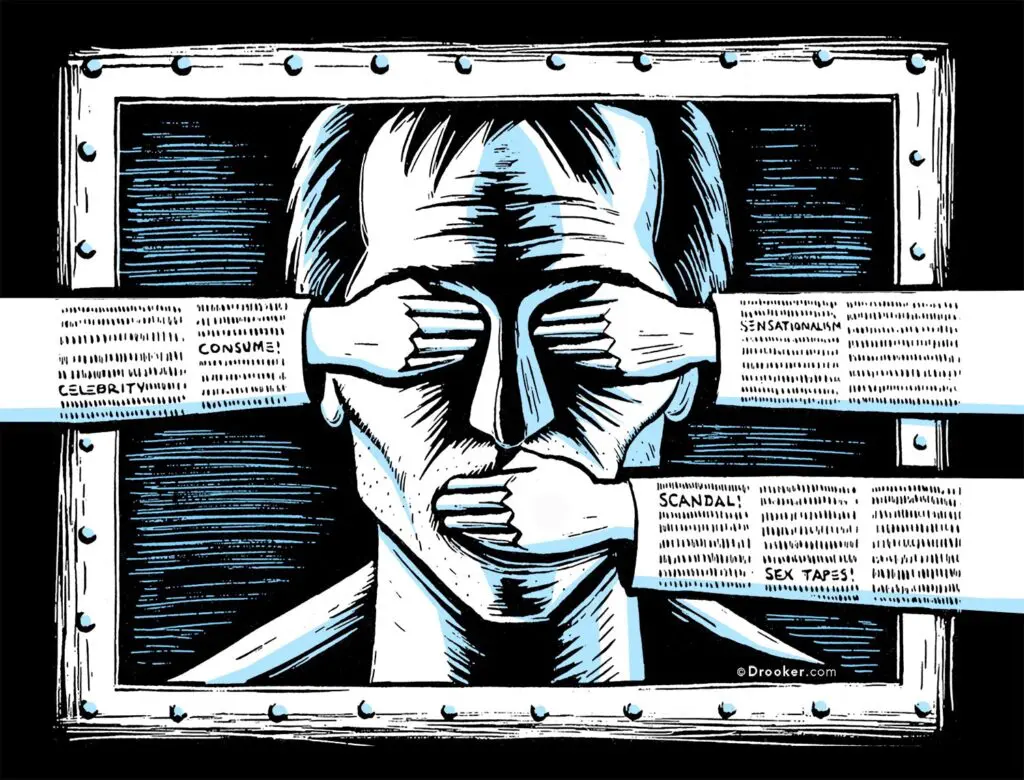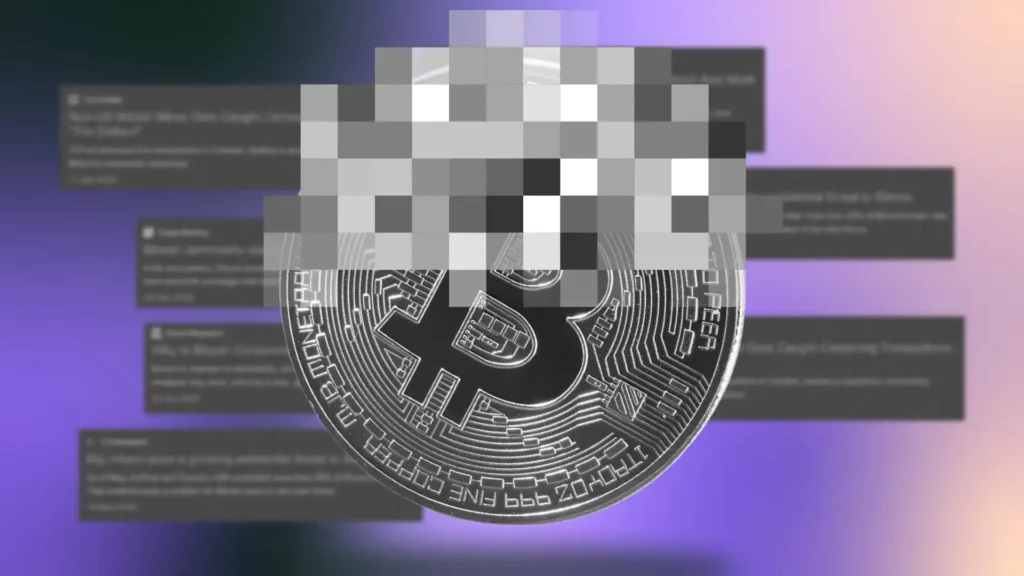The internet has long been a battleground for information. In the past decade, we’ve witnessed various attempts by governments, corporations, and other entities to regulate or censor content, from removing posts on social media to restricting access to certain websites. As power dynamics evolve in the digital age, there’s been growing concern about who controls the flow of information—and how that affects the public’s ability to make informed decisions.
Enter Web3, the decentralized internet powered by blockchain technology. Web3 promises to give users more control over their digital identities, content, and interactions online, while providing a more secure and transparent infrastructure for communication. One of the most intriguing aspects of Web3 is its potential to disrupt the traditional methods of content censorship. In this blog post, we’ll explore how crypto and Web3 media are changing the landscape of censorship and the ongoing battle for the freedom of information.
The Problem with Traditional Media and Censorship

Before diving into the Web3 revolution, it’s important to understand the censorship issues that have plagued traditional media platforms.
In centralized platforms like Facebook, Twitter, YouTube, and even traditional news outlets, content is controlled by a central authority. These companies and organizations have the power to decide what gets published and what gets removed, often based on their policies, user complaints, or government pressure. This centralized control has resulted in:
- Content Moderation and Bias: Platforms may censor content based on subjective interpretations of what’s deemed harmful or controversial. The line between protecting users and stifling free speech often gets blurred. Algorithms prioritize certain types of content, leading to echo chambers and biased narratives.
- Government and Corporate Influence: Governments, especially authoritarian regimes, often pressure tech giants to suppress dissenting opinions or restrict access to independent media outlets. Even in democratic countries, lobbying from powerful corporations can result in the suppression of content that harms their interests.
- De-platforming: High-profile cases of de-platforming have become more common, where individuals or organizations are banned from major social media platforms due to their views or content. While this may be justified in cases of hate speech or violence, de-platforming has also been used against individuals with political or ideological viewpoints that don’t align with the mainstream narrative.
- Data Privacy Concerns: Users on centralized platforms have limited control over their data, often unknowingly surrendering their personal information to companies that use it for commercial purposes. This raises concerns about privacy, data manipulation, and surveillance.
As traditional media companies continue to play a significant role in censoring content, there is an increasing need for alternatives that empower users to have more control over what they publish, consume, and share.
Enter Web3: Decentralized, Transparent, and Censorship-Resistant

Web3 is an umbrella term for a new, decentralized version of the internet, built on blockchain technology. Unlike the traditional web, where content is stored and managed by centralized servers, Web3 utilizes peer-to-peer networks and smart contracts to enable censorship-resistant platforms.
The core principles of Web3 that contribute to its potential to change the info war are:
- Decentralization: Web3 applications (dApps) are not controlled by any single entity. Instead, they are distributed across a network of nodes, making it incredibly difficult for any one authority to shut them down or censor content.
- Blockchain Technology: Blockchain provides a transparent and immutable ledger for storing data. In a Web3 environment, all content and interactions are recorded on the blockchain, making it nearly impossible to alter or erase information once it’s been published.
- Peer-to-Peer Communication: Web3 encourages direct interaction between users, cutting out intermediaries. This means that individuals can communicate freely without worrying about content being filtered or removed by a central authority.
- Cryptographic Security: Web3 uses advanced cryptography to ensure that data is protected from tampering and hacking. Users maintain control over their own information, and their identities can remain pseudonymous or fully anonymous.
How Web3 Is Changing the Info War

The decentralized nature of Web3 opens up new possibilities for combating censorship and ensuring the free flow of information. Here are several key ways Web3 is impacting the ongoing information war:
1. Censorship-Resistant Media Platforms
One of the most significant advantages of Web3 is the development of decentralized media platforms that are resistant to censorship. These platforms are built on blockchain technology, which means no single entity can control what content is published or removed.
For example, platforms like Steemit and Mirror enable users to post articles, blogs, or news stories without fear of censorship. Since the content is hosted on a decentralized network, it’s much harder for governments, corporations, or other authorities to censor or remove posts. Even if one server or node is taken down, the content remains accessible from other parts of the network.
This creates an environment where people can share unfiltered information, giving voice to marginalized communities or dissenting opinions that might otherwise be silenced on centralized platforms.
2. Decentralized Social Media
While traditional social media platforms have been criticized for silencing specific voices, decentralized platforms like Mastodon and Diaspora are designed to function without central control. These platforms allow users to set up their own independent nodes and join decentralized communities where content moderation is community-driven, rather than imposed from above.
By relying on blockchain-based identity systems and cryptographic protections, Web3 social media platforms offer much stronger safeguards against hacking, de-platforming, and government intervention. Users can maintain their online identities and freely express their opinions, even in politically sensitive environments.
3. Transparent Journalism and Fact-Checking
Web3 could drastically improve journalistic transparency and the accuracy of news reporting. Blockchain-based platforms allow news organizations and independent journalists to post content that is both verifiable and immutable. This means that once a story is published, its integrity can’t be compromised or altered.
In the world of fact-checking, blockchain could be used to track sources and citations, creating a more transparent process for verifying the validity of news articles. This could help combat the rise of misinformation, fake news, and media manipulation by ensuring that stories are backed by trustworthy data.
4. Blockchain for Digital Rights and Content Ownership
Another key aspect of Web3 is the ability to own and monetize digital content. Traditional media has often been criticized for exploiting content creators, taking a large share of revenue generated from ads or subscriptions. In Web3, NFTs (Non-Fungible Tokens) and decentralized platforms enable creators to directly monetize their work.
For instance, independent journalists, artists, and influencers can use blockchain technology to sell their content as NFTs, ensuring that they retain full ownership and control. This reduces the reliance on traditional media outlets, where editorial control often leads to bias or censorship.
5. Fostering Digital Privacy
In a world where data privacy is increasingly under threat, Web3 offers users more control over their personal information. By using cryptographic tools and blockchain technology, individuals can interact with the web while maintaining a higher degree of privacy and security.
This is especially important in authoritarian regimes, where governments track and monitor citizens’ online activities. With Web3’s privacy features, users can bypass censorship, access restricted information, and communicate securely without fear of surveillance.
Challenges and the Road Ahead
While Web3 has the potential to revolutionize the way we interact with information, it’s not without its challenges. Scaling decentralized platforms to handle large volumes of traffic, ensuring interoperability between different blockchain networks, and improving the user experience are all significant hurdles.
Additionally, the rise of decentralized media may present its own set of problems, such as lack of accountability, content moderation issues, and the spread of harmful content. Ensuring that Web3 platforms remain responsible and safe will require innovative solutions to strike a balance between freedom of expression and the prevention of harm.
Conclusion: The Future of Information in the Web3 Era
Web3 is poised to transform the way we consume and share information. With its decentralized, censorship-resistant infrastructure, Web3 offers an alternative to the centralized platforms that have been accused of bias, censorship, and exploitation.
By giving users more control over their content and data, Web3 empowers individuals to participate in the information war in ways that were previously impossible. As this technology evolves, it will likely play a crucial role in shaping the future of free speech, content ownership, and digital privacy.
While Web3 is still in its early stages, it represents a new frontier for the fight against censorship—and the dawn of a more open, transparent, and secure internet. The question remains: will Web3 be the solution to the growing concerns of content control, or will it face challenges that could ultimately limit its potential? Only time will tell, but one thing is certain—the info war is far from over, and Web3 media could be one of its most powerful weapons.




Comments are closed